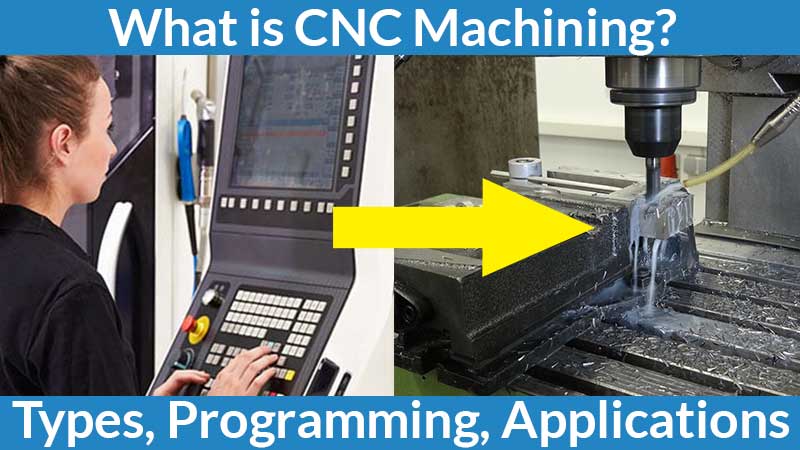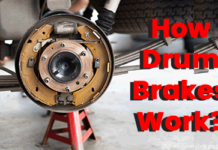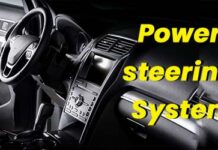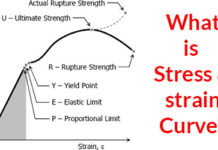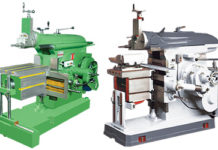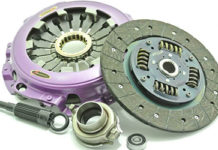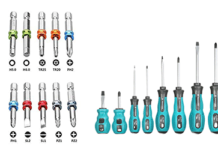Contents
CNC Machining
It is a manufacturing process where pre-programmed computer software dictates the movement of factory tools and machinery. The CNC machining is used to control a variety of complex machinery, from grinders and lathes to mills and routers. With this process, the three-dimensional cutting tasks can complete with a single set of prompts.
The full form of CNC is “Computer Numerical Control” and in this process that runs in contrast to and thereby the limitations of manual control and where they live operators are needed to prompt and guide to commands of machining tools via levers, buttons, and wheels. The CNC may resemble a regular set of computer components and the software programs and consoles are used in CNC machining for all forms of computation.
👉 CNC Machine Working, Types & Applications?
How CNC machine works?
When the CNC machining is activated as per design the cuts are programmed in software and dictate the corresponding tools and machinery, which carry out the dimensional tasks like a robot.
For the CNC programming, the code generator within the numerical system often assume the mechanism flawless, and if there is any possibility of errors are greater when a CNC machine is directed to cut in more than one direction simultaneously. In the CNC machine the tool is outlined by a series of inputs known as the part program.
In the numerical control machine, the programs are inputted via punch cards. And the opposite in the CNC machine the programs are fed to computers though small keyboards. The CNC programming is retained in a computer’s memory. Code is written and edited by programmers that’s why the CNC systems are far more expensive than computational capacity. The CNC systems are not static and prompt can be added to pre-existing programs via revised code.
How to program CNC Machines?
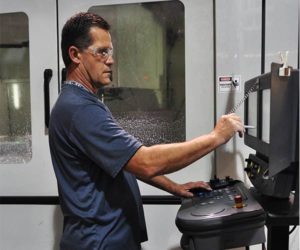
The CNC machines are operated via numerical control and a software program is designated to control an object. The language used in CNC machining is known as G-code and it is written to various behaviors of corresponding machine-like speed, feed rate, and coordination.
With CNC machining it is possible to pre-program the speed and position of machine tool functions and run them through software in repetitive, predictable cycles with the help of human operators. With these capabilities, this process is adopted in the manufacturing sector and especially in metal and plastic production.
In the initial stage, the 2D or 3D CAD drawing is conceived and later it is translated to computer code for CNC system to execute. After the completion of coding, the operator gives a trial run to ensure that there is no error in coding.
Open/Closed-Loop Machining Systems
The position control is determined by an open-loop or closed-loop system. With the former, the signaling runs in a single direction between controller and motor. The closed-loop system makes the controller capable to receive feedback and with it, the error can be corrected. The closed-loop system can correct the irregularities in velocity and position.
In the CNC machining, it moves across X and Y axes. The tool, in turn, is positioned and guided via stepper and servo motors which work exactly as G-code. Now if the force and speed are minimal, process can be run via open-loop control. The closed-loop control is necessary for speed, consistency and accuracy are required for an industrial application like metalwork.
Fully Automated CNC Machining
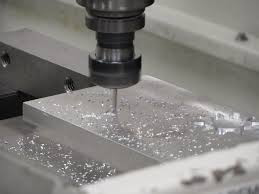
Today, the production of parts via pre-programmed software is mostly automated. Dimensions of a given part are set with computer-aided design (CAD) software and then converted into an actual finished product with computer-aided manufacturing (CAM) software.
For manufacturing, any workpiece required a variety of machine tools like drills and cutters. To get the best quality product, many of today’s machines combine several different functions into one cell. The installation might have several machines and set of robotic hands that transfer parts from one application to another and all this is controlled by the same program. In the setup, the CNC process allows for consistency in parts production that would difficult to replicate manually.
Different types of CNC Machines
The first-ever numerical control machines are introduced in the 1940s when the motors were first employed to control the movement of pre-existing tools. With the advancement in technology, the mechanism was enhanced with analog computers and digital computers give a boost to the CNC machining.
Today’s most CNC machines are completely electronic. The ultrasonic welding, hole-punching, and laser cutting are some of the common CNC-operated processes. Most commonly used machines in CNC are:
CNC Mills
The CNC mills are capable of running programs based on the number and letter-based prompts which pieces across various distances. Programming of a mill machine is based on G-code or some unique language developed by the programming team. The basic mills have a three-axis system (X, Y, and Z) and the latest mills have three additional axes.
Lathes
The pieces are cut in a circular direction with indexable tools in the lathe machines. With the CNC technology the cuts made by lathes are very precise and high velocity. The CNC lathes are used to producing a complex design which is not possible manually. The functions of CNC-run mills and lathes are similar. Like mills, lathes can be programmed by G-code or with unique proprietary code. The most CNC lathes are consisting of X and Z axes.
Plasma Cutters
In the plasma cutter, the material is cut with a plasma torch. This process is used for mostly metal materials but it is also used for other surfaces. The heat and speed are required to cut metals and in the plasma, it is completed via a combination of compressed-air as and electrical arcs.
Electric Discharge Machines
It is also known as die sinking and spark machining. This process molds the workpieces into particular shapes with electrical sparks. With EDM, the current discharges between two electrodes which remove the part of the workpiece.
When the space between electrodes becomes smaller, the electric fields become more intense and stronger than dielectric which makes it possible for the current to pass between two electrodes. The portion of the workpiece is removed by each electrode and subtypes of EDM have:
- Wire EDM where spark erosion is used to remove portions from an electronically conductive material.
- Sinker EDM where the electrode and workpiece are soaked in dielectric fluid for the purpose of piece formation.
In the flushing, the debris from each finished workpiece is carried by a liquid dielectric which appears once the current between two electrodes has stopped and it is to eliminate any further electric charge.
Water Jet Cutters
In the CNC machining, the water jets are used to cut hard materials like granite and metal with the high-pressure of water. Sometimes the sand and other strong abrasive substances are mixed with water. The factory machine parts are shaped through this process.
The other benefit of the water jet is it works as a cooler alternative for materials that are unable to bear heat-intensive processes like other CNC machines. The water jets are used in many sectors like aerospace, mining industries, parts used for carving and cutting, etc. It is also used to make intricate cuts in material, as the massive amount of heat can change the material’s intrinsic properties which may result from metal on metal cutting.
Other Uses of CNC Machining
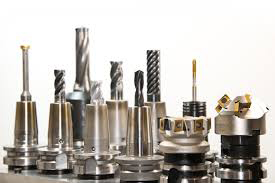
As there are many CNC machine videos available to show how CNC is used to make highly detailed cuts out of metal pieces for industrial hardware products. The CNC machine used in
Embroidery machines
Wood Routers
Turret Punchers
Wire-Bending Machines
Foam Cutters
Laser Cutters
Cylindrical Grinders
3D Printers
Glass Cutters
When any complicated cut is needed to be made at various levels and angles on a workpiece, it can be made on a CNC machine in minimum time. If the machine is programmed with the right code, the machine works smoothly as per guided by software. As the coding is perfect according to design, the detail of the product and technological value should emerge after the process has finished.
CNC Machine Programming
CNC programming is very crucial for any workpiece. The CNC machining is not a foolproof process. In some cases, the workpiece or machine both can be harmful. If this situation happens, there may be a crash or the tools or machine part may break. Tools damage by a crash may also damage the machine, and this may break the minor screw breakage to serious structural deformity.
The CNC equipment is unable to sentience to know which distance is far. So the tools must require to programmed to work without fault. Now if the program code is miscalculated, the CNC machine could be driven outside the physical bounds which cause an internal collision. Most of today’s CNC machines are manufactured with parameter boundaries that can manipulate by operators.
Some CNC machines are equipped with spindle load sensing and which others don’t have. And the software plays a crucial role as it must be coded properly to ensure everything goes according to parameter and crash wouldn’t happen. If a CNC machine is equipped with a load sensor, there are still chances of a crash. When the tool function goes astray then the operator should rectify the situation.
How to prevent Crash on CNC Machine?
The encoder-disk position sensors prevent the crash in advance. Also, the torque sensors help to determine the CNC machine is moving to intended and to detect an unwanted cutting.
In the garage CNC machines, the tools are reliant on the rotational precision of stepper motors for a correct number of degrees. For monitoring the tool position and the pulses go to stepper must be counted and, in most cases, there is no form of alternate monitoring.
For the industrial CNC machine, the closed-loop controls are employed and the control knows the axis position. And if it is properly controlled, the crashes are minimized and it is the responsibility of programmers that they input the accurate code for safety.
In the last two decades, the CNC software has advanced and also had a range of tools like axes, clamps, fixtures, spindles, turrets can base precisely in 3D solid models. With these specifications programmed into code, it is easier to check that if the crash is occurred or not with a particular cycle.
This is the information about CNC Machining and What is a CNC machine and how CNC machine works.
🔔We hope this information will help you. For more new information click on the notification button and get regular updates from Unbox Factory.
Now if you find this information helpful, share it with your friends, family, and colleagues.
If you like this post, let us know by comment below, if you want to add-on information about this topic, comment the information. We will consider the information if it is relevant.
Thank you for reading.

